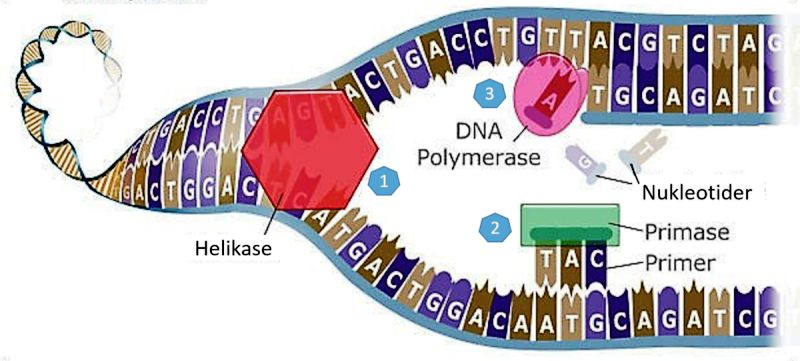
- #SUMMARIZE THE PROCESS OF DNA REPLICATION HOW TO#
- #SUMMARIZE THE PROCESS OF DNA REPLICATION CODE#
- #SUMMARIZE THE PROCESS OF DNA REPLICATION FREE#
In base excision repair, DNA glycosylases specifically identify and remove the mismatched base. Excision repair can be specific or nonspecific. For direct reversal of alkylation events, a DNA methyltransferase or DNA glycosylase detects and removes the alkyl group. For example, in a process called photoreactivation, pyrimidine bases fused by UV light are separated by DNA photolyase (a light-driven enzyme). Direct reversal repair is specific to the damage. There are three types of repair mechanisms: direct reversal of the damage, excision repair, and postreplication repair. It is extremely important that the integrity of DNA be maintained in order to ensure the accurate workings of a cell over its lifetime and. (These agents can also create single-strand breaks, though this form of damage often is easier for cells to overcome.) Base analogs and intercalating agents can cause abnormal insertions and deletions in the sequence. Ionizing radiation and certain drugs, such as the chemotherapeutic agent bleomycin, can also block replication, by creating double-strand breaks in the DNA.
#SUMMARIZE THE PROCESS OF DNA REPLICATION FREE#
Ultraviolet (UV) rays can result in the production of damaging free radicals and can fuse adjacent pyrimidines, creating pyrimidine dimers that prevent DNA replication. Oxidizing agents and ionizing radiation create free radicals in the cell that oxidize bases, especially guanine. Nitrosamines, which are found in products such as beer and pickled foods, can cause DNA alkylation (the addition of an alkyl group). Chemical agents modify bases and interfere with DNA replication. Replication errors are minimized when the DNA replication machinery “proofreads” its own synthesis, but sometimes mismatched base pairs escape proofreading. Spontaneous mutations occur when DNA bases react with their environment, such as when water hydrolyzes a base and changes its structure, causing it to pair with an incorrect base. Different types of damage, however, can prevent correct base pairing, among them spontaneous mutations, replication errors, and chemical modification. Successful DNA replication requires that the two purine bases, adenine (A) and guanine (G), pair with their pyrimidine counterparts, thymine (T) and cytosine (C).
#SUMMARIZE THE PROCESS OF DNA REPLICATION CODE#
Mutations in the genetic code can lead to cancer and other genetic diseases. It also preserves the health of an individual. DNA repair ensures the survival of a species by enabling parental DNA to be inherited as faithfully as possible by offspring.

Saving Earth Britannica Presents Earth’s To-Do List for the 21st Century.Britannica Beyond We’ve created a new place where questions are at the center of learning.100 Women Britannica celebrates the centennial of the Nineteenth Amendment, highlighting suffragists and history-making politicians.
#SUMMARIZE THE PROCESS OF DNA REPLICATION HOW TO#


Britannica Explains In these videos, Britannica explains a variety of topics and answers frequently asked questions.This Time in History In these videos, find out what happened this month (or any month!) in history.#WTFact Videos In #WTFact Britannica shares some of the most bizarre facts we can find.Demystified Videos In Demystified, Britannica has all the answers to your burning questions.Britannica Classics Check out these retro videos from Encyclopedia Britannica’s archives.


 0 kommentar(er)
0 kommentar(er)
